
Algeria, officially the People's Democratic Republic of Algeria, is a country in North Africa. Algeria is bordered to the northeast by Tunisia; to the east by Libya; to the southeast by Niger; to the southwest by Mali, Mauritania, and Western Sahara; to the west by Morocco; and to the north by the Mediterranean Sea. It is considered part of the Maghreb region of North Africa. It has a semi-arid geography, with most of the population living in the fertile north and the Sahara dominating the geography of the south. Algeria covers an area of 2,381,741 square kilometres (919,595 sq mi), making it the world's tenth largest nation by area, and the largest nation in Africa, more than 200 times as large as the continent's smallest country, The Gambia. With a population of 44 million, Algeria is the tenth-most populous country in Africa, and the 32nd-most populous country in the world. The capital and largest city is Algiers, located in the far north on the Mediterranean coast.

Algiers is the capital and largest city of Algeria. The city's population at the 2008 census was 2,988,145 and in 2020 was estimated to be around 4,500,000. Algiers is in the north-central part of Algeria.
Since its independence from France in 1962, Algeria has pursued an activist foreign policy. In the 1960s and 1970s, Algeria was noted for its support of Third World policies and independence movements. Since its independence, Algeria has been a member of the Arab League, the African Union and of the United Nations.

The Regency of Algiers was an early modern tributary state of the Ottoman Empire on the Barbary Coast of North Africa from 1516 to 1830. Founded by the corsair brothers Oruç and Hayreddin Barbarossa, the regency was a formidable pirate base infamous for its corsairs, first ruled by Ottoman viceroys, and later a sovereign military republic that plundered and waged maritime holy war against Christian powers.
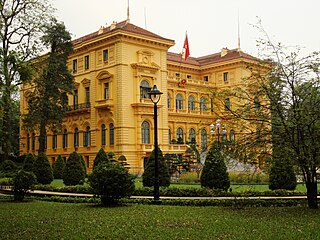
French colonial architecture includes several styles of architecture used by the French during colonization. Many former French colonies, especially those in Southeast Asia, have previously been reluctant to promote their colonial architecture as an asset for tourism; however, in recent times, the new generation of local authorities has somewhat "embraced" the architecture and has begun to advertise it. French Colonial architecture has a long history, beginning in North America in 1604 and being most active in the Western Hemisphere until the 19th century, when the French turned their attention more to Africa, Asia, and the Pacific.

The Battle of Algiers is a 1966 Italian-Algerian war film co-written and directed by Gillo Pontecorvo. It is based on action undertaken by rebels during the Algerian War (1954–1962) against the French government in North Africa, the most prominent being the eponymous Battle of Algiers, the capital of Algeria. It was shot on location in a Roberto Rossellini-inspired newsreel style: in black and white with documentary-type editing to add to its sense of historical authenticity, with mostly non-professional actors who had lived through the real battle. The film's score was composed by Pontecorvo and Ennio Morricone. It is often associated with Italian neorealist cinema.

There were two near simultaneous bombings in Algiers which occurred on 11 December 2007 when two car bombs exploded 10 minutes apart starting at around 9:30 a.m. local time, in the Algerian capital, Algiers. The al-Qaeda Organization in the Islamic Maghreb has claimed responsibility for the attacks, stating that it was "another successful conquest [...] carried out by the Knights of the Faith with their blood in defense of the wounded nation of Islam." These attacks constitute another act of violence in the ongoing Islamic insurgency, a continuation of the Algerian Civil War that has claimed 200,000 lives.
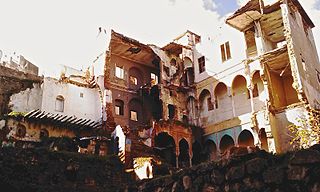
The Battle of Algiers was a campaign fought during the Algerian War. It consisted of urban guerrilla warfare and terrorist attacks carried out by the National Liberation Front (FLN) against the French authorities in Algiers, and by the French authorities, army, and French terrorist organizations against the FLN. Both sides targeted civilians throughout the battle. The conflict began with attacks by the FLN against the French forces and Pieds-Noirs followed by a terrorist attack on Algerian civilians in Algiers by a group of settlers, part of the terrorist group "La Main Rouge", aided by the police. Reprisals followed and the violence escalated, leading the French Governor-General to deploy the French Army in Algiers to suppress the FLN. Civilian authorities gave full powers to General Jacques Massu who, operating outside legal frameworks between January and September 1957, eliminated the FLN from Algiers. The use of torture, forced disappearances and illegal executions by the French later caused controversy in France.

In July 2001, President Abdelaziz Bouteflika became the first Algerian President to visit the White House since 1985. This visit, followed by a second meeting in November 2001, and President Bouteflika's participation at the June 2004 G8 Sea Island Summit, is indicative of the growing relationship between the United States and Algeria. Since the September 11 attacks in the United States, contacts in key areas of mutual concern, including law enforcement and counter-terrorism cooperation, have intensified. Algeria publicly condemned the terrorist attacks on the United States and has been strongly supportive of the international war on terrorism. The United States and Algeria consult closely on key international and regional issues. The pace and scope of senior-level visits has accelerated.

The following outline is provided as an overview of and topical guide to Algeria:
The 2003 Boumerdès earthquake occurred on May 21 at in northern Algeria. The shock had a moment magnitude of 6.8 and a maximum Mercalli intensity of X (Extreme). The epicentre of the earthquake was located near the town of Thénia in Boumerdès Province, approximately 60 km east of the capital Algiers. The quake was the strongest to hit Algeria in more than twenty years – since 1980, when a magnitude 7.1 earthquake resulted in at least 2,633 deaths.

Algeria and China have traditionally strong relations, celebrating the 60th anniversary of the establishment of diplomatic relations in 2018. In 2010, relations were considered the strongest of all Arab-Chinese relations behind Sudanese-Chinese relations. While relations are firmly grounded in commercial ties, diplomatic relations have notably extended into socio-cultural and political spheres.

The Algerian Space Agency, was established on January 16, 2002 in Bouzareah, Algiers. The agency is in charge of the Algerian space program, and has flown five different satellites.
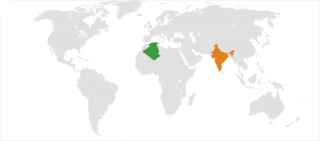
Algeria and India maintain diplomatic relations. Algeria has an embassy in New Delhi, and India has an embassy in Algiers.
The Chinese in Algeria are a group of Chinese nationals numbering an estimated 200,000 people residing in Algeria. The recent migration of Chinese to Algeria is driven by commerce with most Chinese nationals working on infrastructure projects.
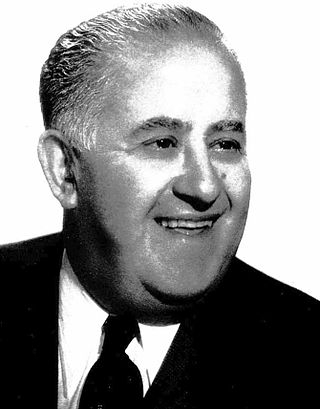
Mahieddine Bachtarzi was an Algerian singer of opera (tenor), actor, writer and director of the TNA. He was also the author of some 400 musical works, with a career that spanned over 70 years, gaining many honors throughout his life.

The Théâtre National Algérien Mahieddine Bachtarzi, formerly known as the Algiers Opera House, is a historic building in Algiers, Algeria. It was built from 1850 to 1853. It was designed by architects Charles Frédéric Chassériau and Justin Ponsard in the Baroque Revival style. After it caught fire in 1883, it was rebuilt from the ground up.
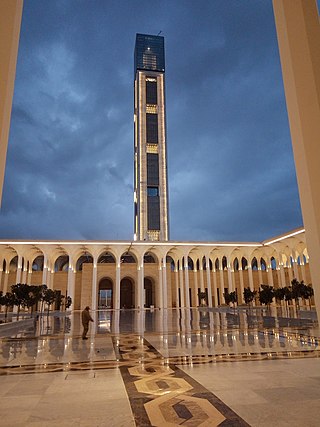
Djamaa el Djazaïr, also known as the Great Mosque of Algiers, is a large mosque located in Algiers, Algeria. Opened in April 2019, it houses the world's tallest minaret and is the third-largest mosque in the world after the Great Mosque of Mecca and Al-Masjid an-Nabawi of Medina in Saudi Arabia.
The 19 martyrs of Algeria were a group of nineteen individuals slain in Algeria between 1994 and 1996 during the Algerian Civil War. They all were priests or professed religious belonging to religious congregations, including seven Trappist Cistercian monks; one was a bishop. Their nations of origin were France (15), French protectorate of Tunisia (1), Spain (2), and Belgium (1).














